In Bali there is the traditional doctor known as the balian usada, whose knowledge is gained through the lontar manuscripts and the inherited teachings of predecessors. Still frequented by many Balinese, the practice of the balian deals with both the sekala and niskala worlds, the seen and unseen, and are the continuation of Bali’s ancient healing tradition.
“My hair? It started clumping when I was around 12 or 13 years old,” remembers Jero Balian Mangku I Wayan Sumawijaya. A single giant dreadlock hangs from the back of his head — one of the physical signs of one’s destiny to become a balian. “I began my path on the first day of the third month, 1964,” says the now 82 year old, as he sits cross-legged, swathed all in white, on the pavilion where he welcomes patients.
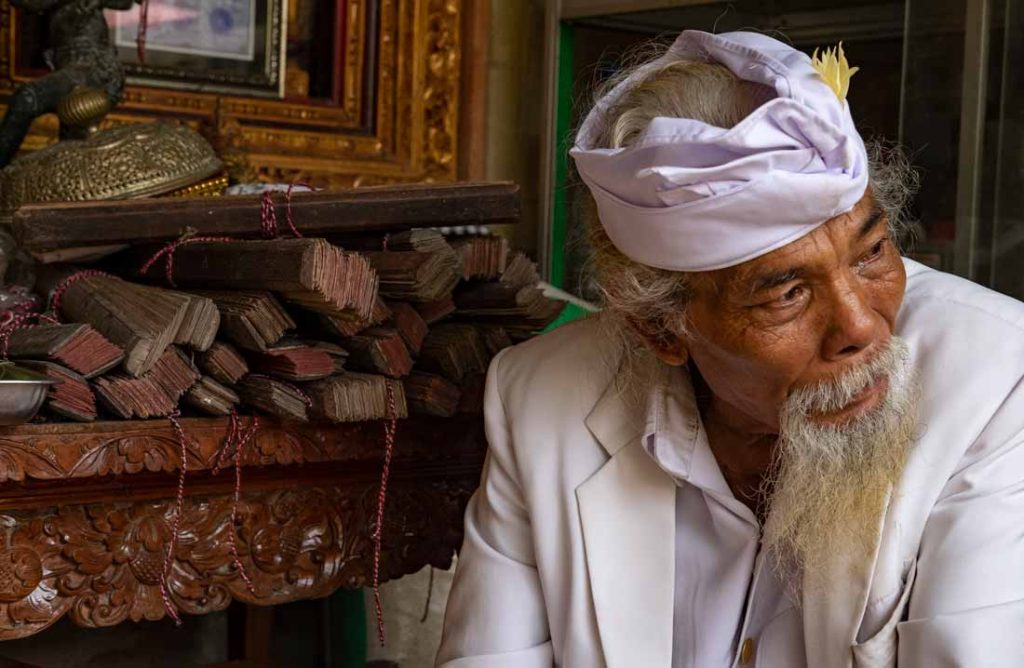
Jero Balian Wayan is a balian usada, a type of traditional doctor who specialises in medicines. In his compound, found in the village of Mekar Bhuana, Abiansemal, are medicinal plants and herbs that he grows, plus a storage room filled with buckets of fermenting gooey ointments and oils. Lining the walls and shelves of his consultation area is a bizarre collection of more exotic ingredients: bones of a shark, the scales of a monitor lizard, a drying wasp hive, a dehydrated soft-coral sea fan. The more Balinese Hindu accoutrements are found too, with keris daggers lined up behind the offerings, sacred rerajahan cloth drawings hanging from the ceiling, and of course, palm leaf manuscripts known as lontar piled high on a nearby desk.
Lessons from the lontar
The balian usada, though herbalists, are known as the scholars of their domain — the domain of the balian. Part doctor, part holy person, they tread the line between the physical and non-physical. There are many different types: you have the balian urat, a kind of healing masseuse; or the balian tulang, who specialises in bones. You also have the more supernatural specialisations, including the balian terang, known as pawang hujan,who fend off rain; the balian tenung, visited for prophecies; and the balian taksu, a medium to the other world.
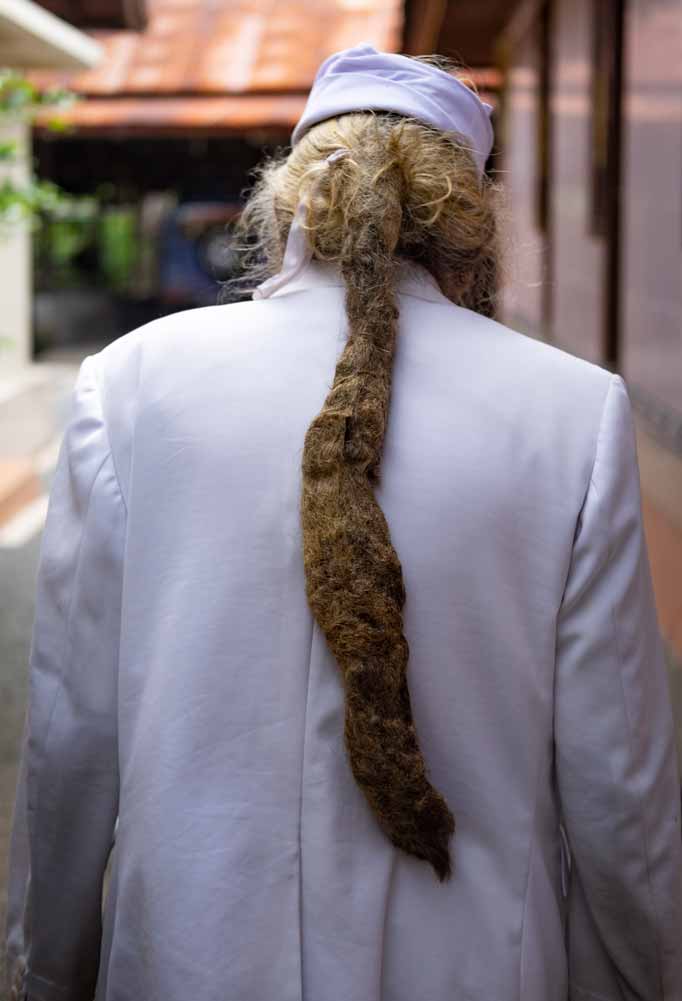
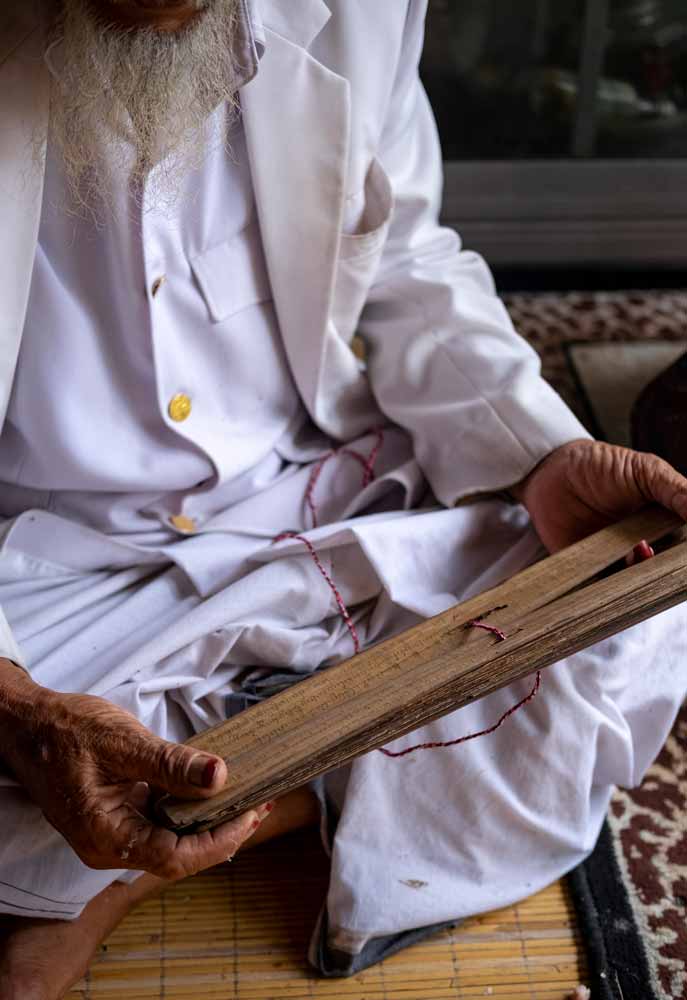
The most commonly visited are the usada, the traditional doctor and pharmacist, who diagnose, treat and prescribe, gaining much of their knowledge from the many different lontar usada, themanuscripts on traditional medicine.
“Before I could read any of the lontar or start my path as a balian, I had to complete the mawinten ceremony.” This is a specialised cleansing that priests or scholars must go through before embarking on holy paths. After this he studied the contents of the lontar passed down from his ancestors, generations old, reading the inscribed aksara Balinese alphabet. Simultaneously he learned the practice from his father, also a balian, like his father before him.
One perceives a healer as someone endowed with divine power or sight, which is certainly the case. But the balian usada spend years studying and memorising the details of their field, each lontar an encyclopaedia on a particular topic. The ‘usada library’ was chronicled by the German doctor Wolfgang Von Weck back in 1937, recording around 150 different specialisations, e.g: The taru pramana outlines the use of medicinal plants; the usada edan explains how to deal with psychiatric cases; usada kamatus provides solutions for sexual issues, from erectile dysfunction to fertility; usadha bebai deals with the magical, like curses or potions… the list goes on.
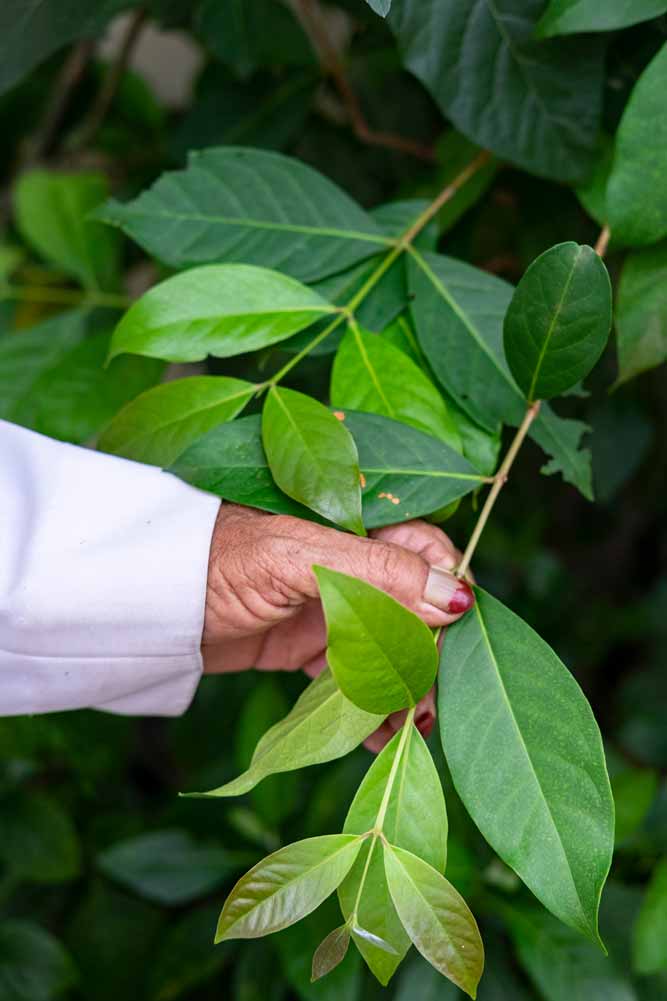

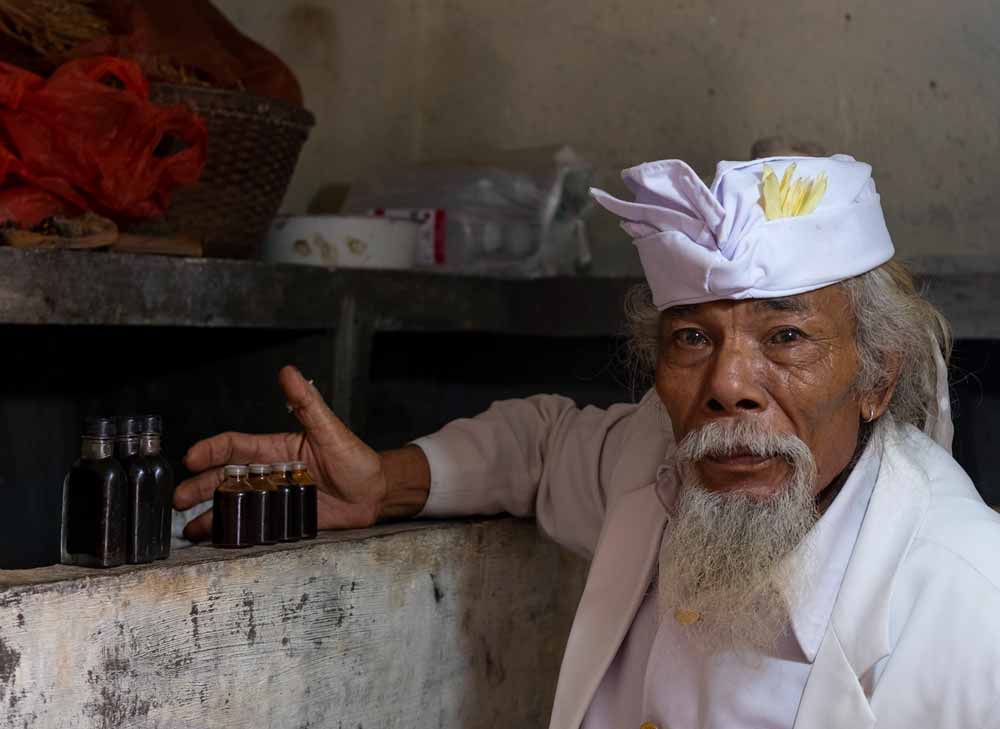
The medicinal plants in the lontar usada are well-recorded, with academic journals listing them along with their effects on the body — there is even an area in the Bali Botanic Gardens called the ‘Usada Park’ dedicated to these plants. However, the skill of the balian is in the ability to draw all the different aspects of this learned knowledge to diagnose and then prescribe.
“When someone comes to visit me, I take in all the details,” explains kakek, referring to himself with the Indonesian word for grandfather. “How they approach, how they sit, their skin, their posture, their eyes. I even take into account the time they arrive and the day of the week.” A patient will share their ailment, and from his diagnoses Jero Balian Wayan will prepare a remedy which ranges from topical powders (bubuk) and pastes (boreh), to boiled ingredients made into a drink (loloh), or perhaps a special oil (minyak).
Ingredients range from leaves, roots and bark to bones and shells. He even prescribes specific days to take the medicine, as the Balinese are strong proponents of auspicious days on their astrological calendar. “People may know the power of medicinal plants, but a balian learns which ingredients are needed and how to administer them.”
The knowledge in these age-old lontar are impressively precise, referring to sicknesses we know today but with different names. Someone suffering from a stroke would be referred to as mati separuh (half-side dead); those with blood-sugar issues or diabetes would be sakit kado. The remedial recipes are also very detailed: Jero Balian showed me a large drum filled with a dark oil, a piece of wood placed in the liquid and mushrooms were growing out of it. “The ointment will be ready when the mushrooms have grown to a certain number of rings,” he divulges, noticing my bemusement.
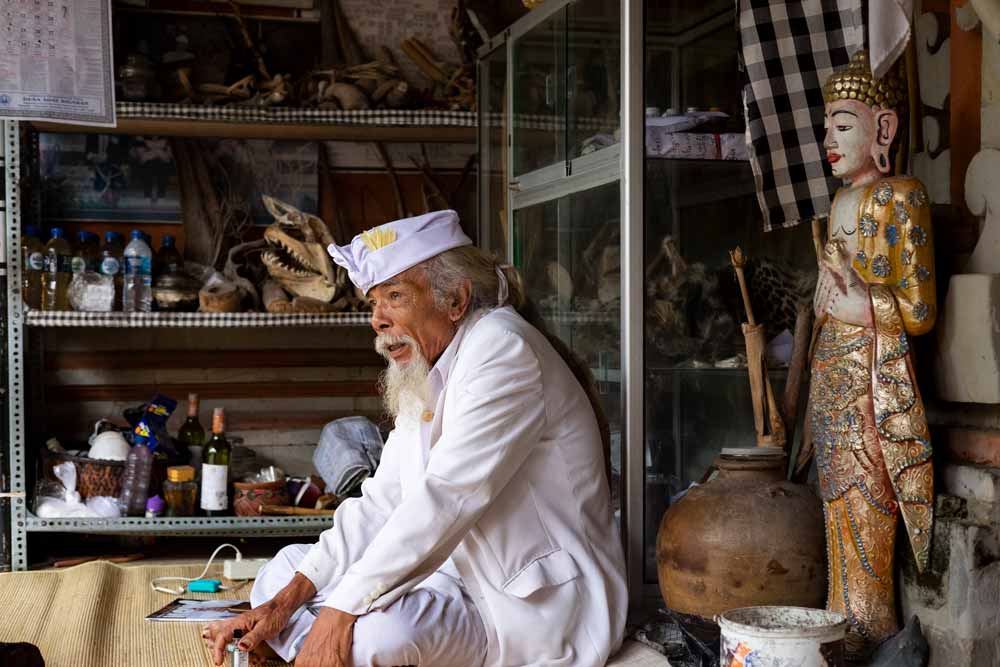
It is said that the original usadas originated from India, spreading to Bali in the 5th century. However, over the many centuries, these original books were likely added to like a multi-generational notebook.
“There are other sources of sickness. You might have upset the ancestors, have an unfulfilled promise to God, or perhaps someone jealous or angry has sent a sickness,” explains the holy man. This is where the balian usadabegin to divert from regular homeopathy; the sacred and magical are very much part of what they do. He shares that many come to him with no source of their pain; MRIs, x-rays and physical checks have revealed nothing, a sure sign that their ailment is niskala, spiritual or magical, and thus the remedy will be too too.
With his friendly, light-hearted demeanour Jero Balian Wayan listens and chats with his patients. During consultation he tells them that he will try his best to apply what he has learned to help them, but he never promises results. He understands that the balian’s status may instil high hopes in people. Though, results have spoken for themselves: across the compound, a stroke victim had begun to walk again after 6 years of immobility.
Ethics and Fate
As the son of a Balinese priest, I Made Suryasa developed a keen interest in Bali’s sacred and religious fields fromma young age. He learned to read the old Javanese language, Kawi, as well as Sanskrit, both used in ancient texts. Thus, he became a senior research assistant for several scholarly books, has been a contributor to Hinduism Today, and studied with one of Bali’s most renowned healers for 15 years.
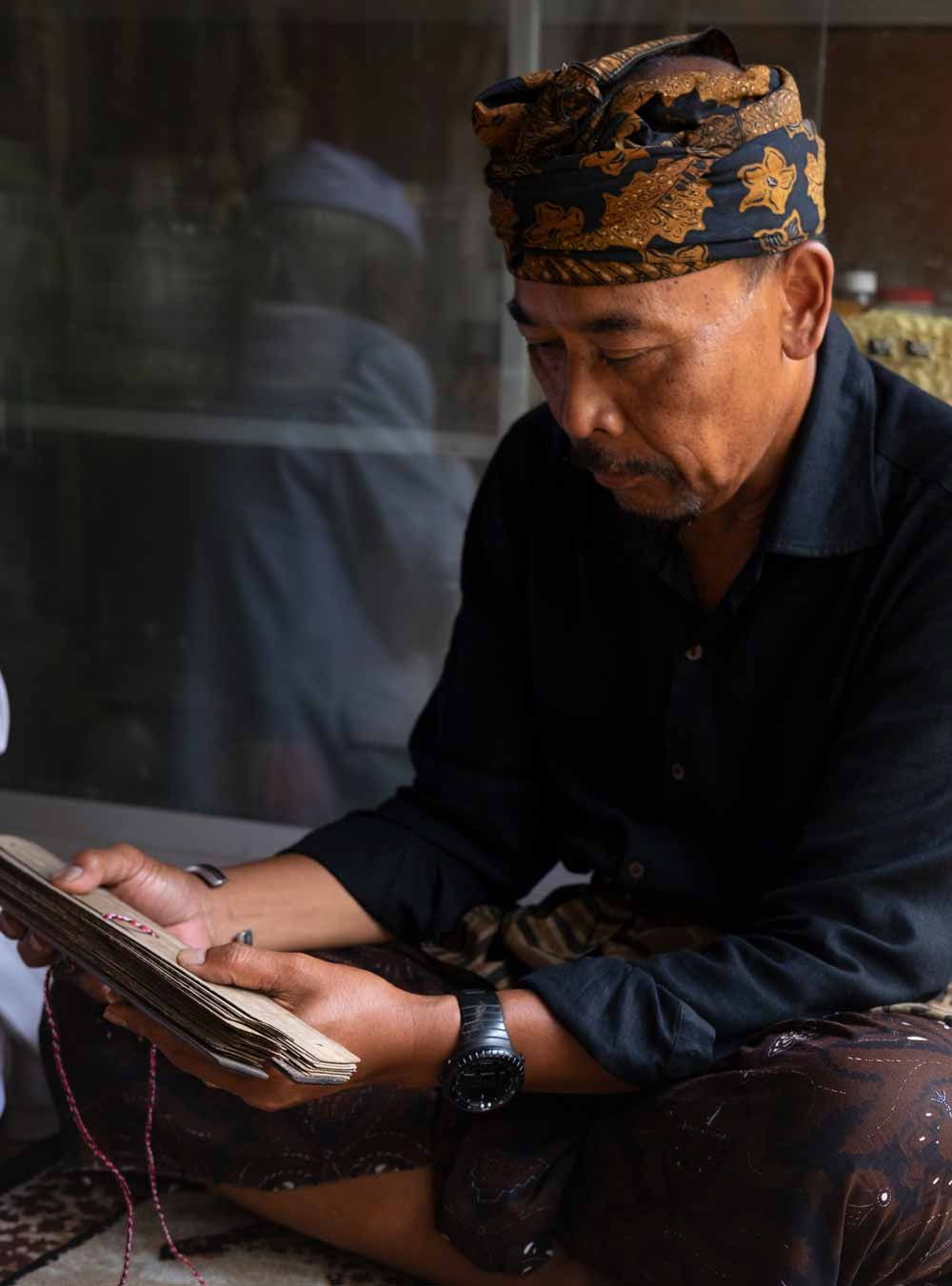
“Balinese healing is complex,” he says. “Visiting the wrong type of balian can lead to some serious disappointment.” Pak Surya, as he is better known, has led traditional healing journeys to Bali since 1986, helping visitors find the right path based on their ailments. His fluent command of Balinese, English and Indonesian has helped to facilitate these more clandestine circles. Importantly, he is selective in the balians he takes his guests to.
“Balians are traditional doctors, and like doctors there is a code of ethics in their practice,” says Pak Surya. “For many balians, it is a calling they must answer. Many come from average backgrounds — farmers, guides, accountants — and many enjoyed their previous life, sometimes more. So learning the ethics of their ‘gift’ is most important. It’s about training the intention. Power in the wrong hands can become a weapon.”
He isn’t wrong. There are balian panengen, good balian, and the balian pangiwa, the ‘bad’ balian. The latter are referred to as those who have veered off path and whose services involve sending sicknesses rather than curing them.
There are some worries. Having worked within the field for a long time, Pak Surya has seen many of his old friends pass on to the next world. Those left are ageing, and the younger generation seem to lack the patience to become respected balian.
Instead, many Balinese have adopted new-age practices to appeal to the growing demand for wellness in Bali, an industry in which everything from kundalini awakening and cacao ceremonies and breathwork can be found. Bali’s healing ‘brand’ has certainly helped to promote these experiences, but many of these are foreign influences, sadly overshadowing what is considered ‘real’ Balinese healing.
A macrocosmic point of view
Tjok Gde Kerthyasa provides a unique insight into Balinese healing. Coming from a mixed background — his mother, Jero Asri Kerthyasa, is Australian; his father Tjokorda Raka Kerthyasa, is Balinese and was a spiritual healer — he has been able to bridge different philosophies and approaches. He founded Tirta Usada, a holistic clinic and research centre in Ubud. Through this he offers a healing approach that encompasses both the usada traditions and the natural medicine he studied and practiced in Sydney.
“I respect science because it gives us a level of objectivity. I need that ethical rigour and research, which I think should be applied to traditional healing just as much as other fields. It gives us a level of accountability,” shares Tjok Gde. “That may come at a cost. It dampens the pure spontaneous, intuitive insights that many of the Balinese healers get.”
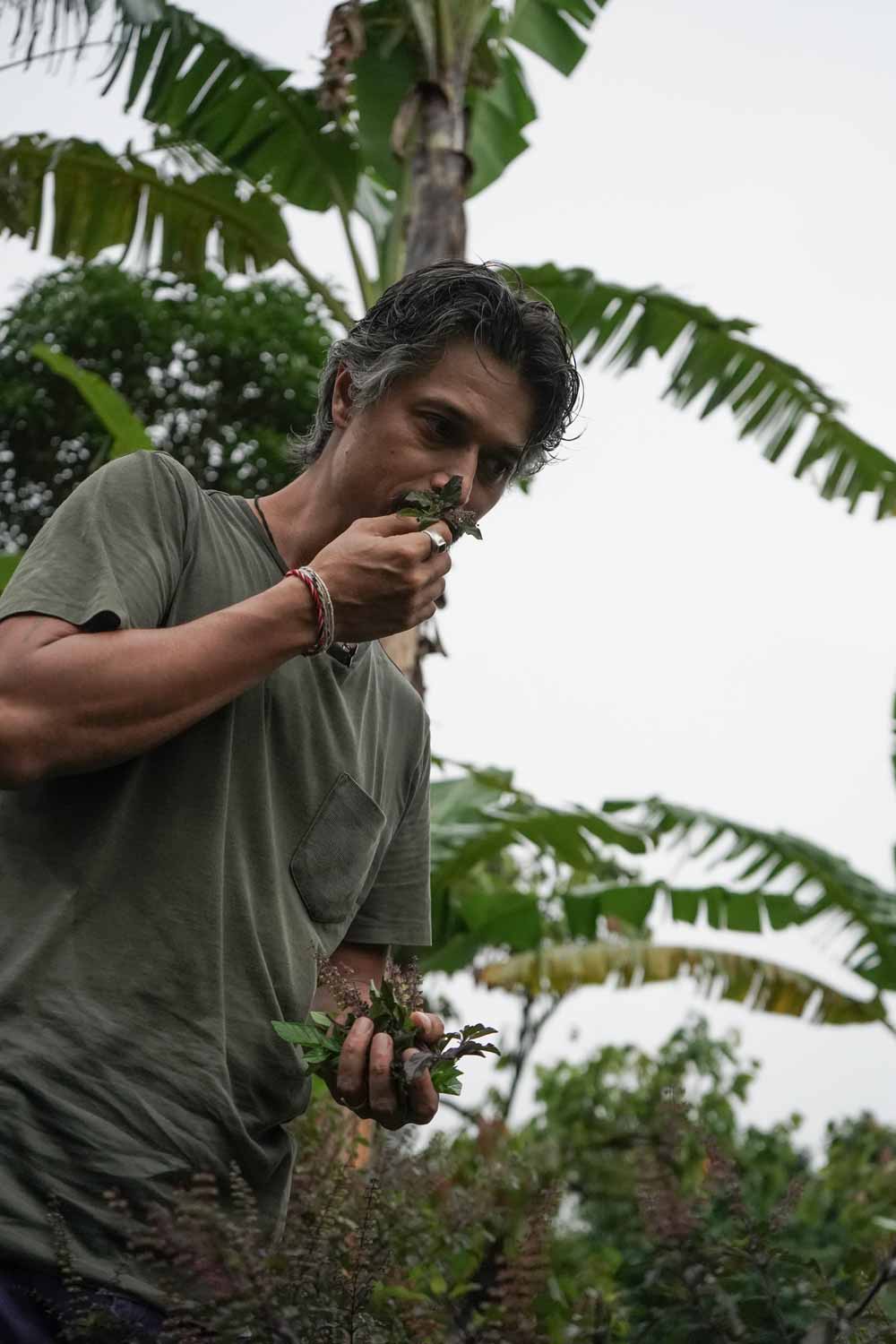
Though this research and academic background has proven valuable to his current practice, other factors beyond the scope of typical natural medicine come into play. “True transformational healing has to view the microcosm (the individual) within a macrocosm; we are all part of a cosmology.” This is the idea that the universe has the power to affect much of the physical world, including our health, our psychology, our environment and therefore what we consume.
This is central to Balinese Hindu philosophy as well: the relationship between bhuana alit and bhuana agung (microcosm, macrocosm). This is precisely why the Balinese astrological calendars dictate so much of everyday and ritual life on the island. A similarity he has found in other astrological philosophies from around the world. Thus, this understanding is infused into his approach when it comes to diagnoses and providing remedies, an approach he calls Transformational Alchemy.
For some this may come across as too esoteric, but Tirta Usada’s success rate is rapidly changing perceptions: effectiveness is their spokesperson. “The medical profession in Bali, and Indonesia, still refer people to healers. I have doctors sending me patients all the time. In Sanglah, they have balians on call 24/7,” shares Tjok Gde. Clearly there is a deeply-rooted respect for the spiritual and sacred in Bali, no matter the circles.
One of the turning points for Tjok Gde was how science was proving his own traditions right, citing a study from his alma mater. “They found that turmeric [curcumin] is more effective than triple antibiotic therapy in treating helicobacter pylori infections,” he explains. H. pylori is a human pathogen of the stomach’s lining, a type of carcinogen associated with gastric cancer, indigestion, ulcers, and digestive diseases. “That research took years, but was already verified for generations in Indonesian jamu traditions! Yet, you go to a doctor today and they’ll still give you the antibiotics.” A quick search online today and one will find many other medical journals also showing the efficacy of curcumin.
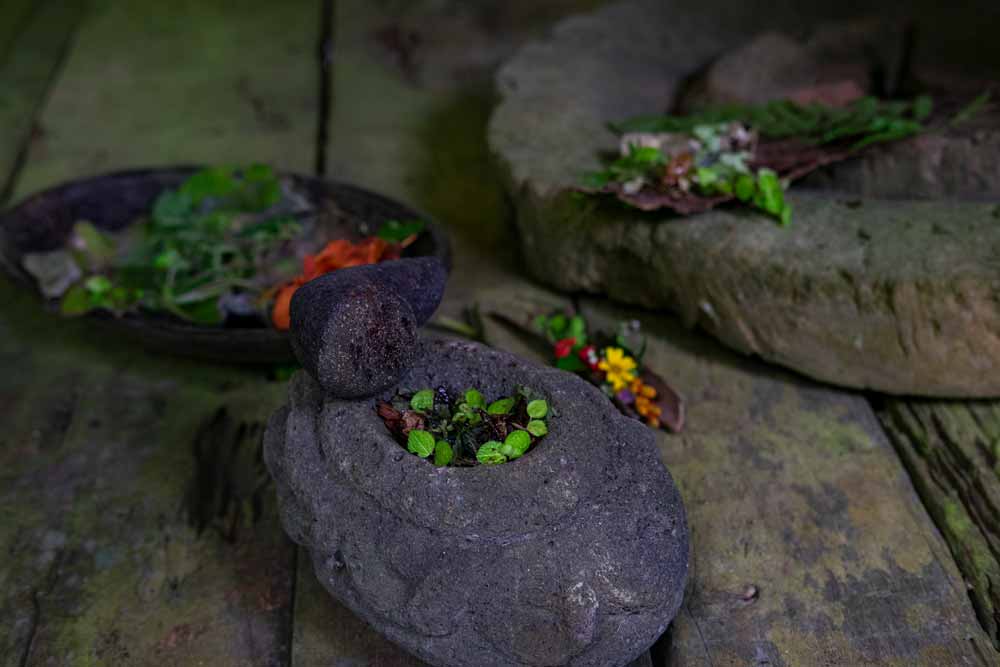
But why then are these traditional practices so often dismissed? What needs to be done to bolster trust in this space? Again, Tjok Gde says being effective is the best champion, but so is education. He currently lectures at Universitas Hindu Indonesia as part of the 4-year BSc program on Ayurveda, but numbers are dropping. “We need to make the learning more meaningful; where does this knowledge fit into the larger cosmology?”
Tirta Usada launched their own training and certification course for Transformational Alchemy back in November 2022. This validates people’s knowledge in the space, but importantly it also holds them accountable. “The lack of accountability in Bali attracts the wrong kind of people, people from around the world that are unqualified. People that are banned from their own countries, but manage to operate here.” Make it effective and continue to hold yourself accountable are two tenets he continues to work by.
Balinese traditional healing is a world that fascinates and opens the imagination to new and different possibilities. An invitation to be open-minded, or at least, intellectually curious. Hopefully through trusted sources, and the ousting of malicious players, the space can continue to grow into something that more people are comfortable to explore.
Practical notes on visiting a balian:
This is best done with a facilitator, such as I Made Suryasa. Some balians are only available on certain days (Jero Balian Wayan is visited on ‘hari kliwon’ after 4pm). We recommend dressing appropriately (sarong and sash) out of respect, and it is customary to present a donation at the end of consultation, placed on a canang sari offering.
For more information:
• I Made Suryasa: balihealers.com
• Tjok Gde Kerthyasa: tirtausada.com







